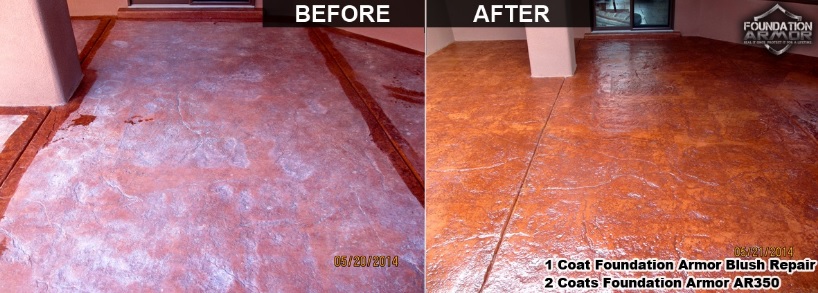Before removing an old acrylic sealer you should make sure that the acrylic sealer needs to be removed. In many cases, an acrylic sealer can easily be repaired without having to remove it.
The above photo, which was taken from FoundationArmor.com, is of a solvent based acrylic sealer that was repaired, not removed. Acrylic sealers are sensitive to moisture. When moisture builds up in the concrete or pores, or if moisture gets below the acrylic, it can cause the acrylic to delaminate or blush (turn white). Solvent based acrylic sealers are the most popular type of acrylic sealer for a reason – they are very easy to maintain. Most issues with solvent based acrylics can easily be repaired with Xylene, a Blush Repair product, or a fresh coat of acrylic sealer. Within minutes, your white acrylic sealer will look instantly renewed.
The solution isn’t so simply with water based acrylic sealers however. If you have a water based acrylic sealer that blushes then it needs to be removed. This can be done with a chemical stripper and or a heated pressure washer. It is best to follow the instructions of the coatings stripper being used.


I have used xylene and a high pressure sprayer to remove acrylic before. You can also use the strong solvent gel strippers(combo of solvents) in the paint section at home depot. Not a bad idea because they don't evaporate quickly. Lately I have been dealing with water based coatings that can't be re emulsified and it's a pain. If a water based coating is not too worn, you can also spot sand away any white spots, clean the surface and then recoat with water based. If you have to strip a water based coating, I would go solvent with a new coat to make life easier in the long run.